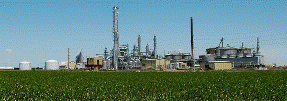Agricultural and Biological Systems Engineering, Department of

Adam Liska Papers
ORCID IDs
Guilherme Rosa da Silva https://orcid.org/0000-0003-4454-9428
Cimelio Bayer https://orcid.org/0000-0001-8553-7330
Document Type
Article
Date of this Version
2025
Citation
Agronomy 15:2 (2025), 267.
doi: 10.3390/ agronomy15020267
Abstract
Brazil is one of the countries that has the most agricultural area under no-till (NT) management. This research study aims to evaluate life-cycle greenhouse gas (GHG) emissions from maize (M) grain production in agroecosystems that used different cover crops under NT management in southern Brazil. The data for this study were from a long-term 41-year field experiment in southern Brazil. The long-term experiment evaluated the effects of fallow (F) and cover crops (oat (O), vetch (V), cowpea (B), pigeon pea (P), and lablab (L)) on nitrous oxide and methane emissions and soil carbon (C) sequestration in maize agroecosystems. Five cropping systems, FM, OV/M, OV/MB, PM, and LM, were evaluated. Our results show that cover crops can reduce life-cycle GHG emissions by ~40 to >100% through increased soil C sequestration. The agroecosystems with winter cover crops (OV/M and OV/MB) had higher life-cycle GHG emissions (0.5 kg CO2e kg−1 of M or 2.6 Mg CO2e ha−1) than the agroecosystem with winter F (0.06 kg CO2e kg−1 of M or 0.2 Mg CO2e ha−1). Summer cover crops (P and L) resulted in negative life-cycle GHG emissions (an average of −0.2 kg CO2e kg M−1 or −1.2 Mg CO2e ha−1) and increased the M grain yield. This study shows that cover crops can reduce greenhouse gas emissions from NT M in southern Brazil.
Included in
Atmospheric Sciences Commons, Bioresource and Agricultural Engineering Commons, Climate Commons, Environmental Indicators and Impact Assessment Commons, Natural Resources Management and Policy Commons, Other Civil and Environmental Engineering Commons, Other Earth Sciences Commons, Other Environmental Sciences Commons


Comments
Copyright © 2025 Guilherme Rosa da Silva, Adam J. Liska, and Cimélio Bayer. Published by MDPI, Basel, Switzerland. This article is an open access article distributed under the terms and conditions of the Creative Commons Attribution (CC BY) license, https://creativecommons.org/ licenses/by/4.0/.